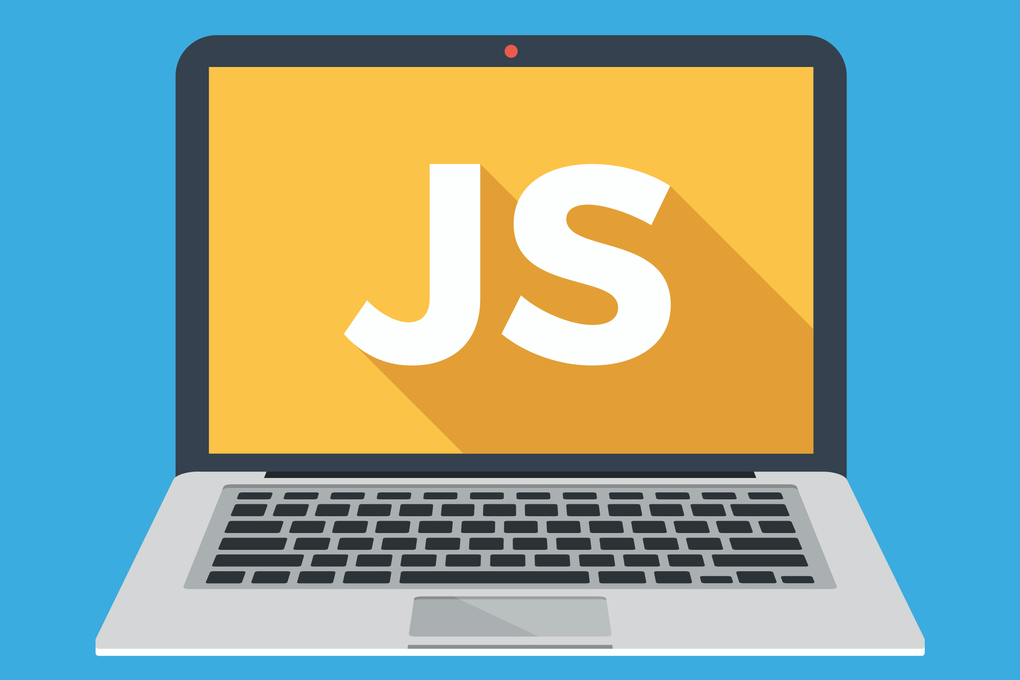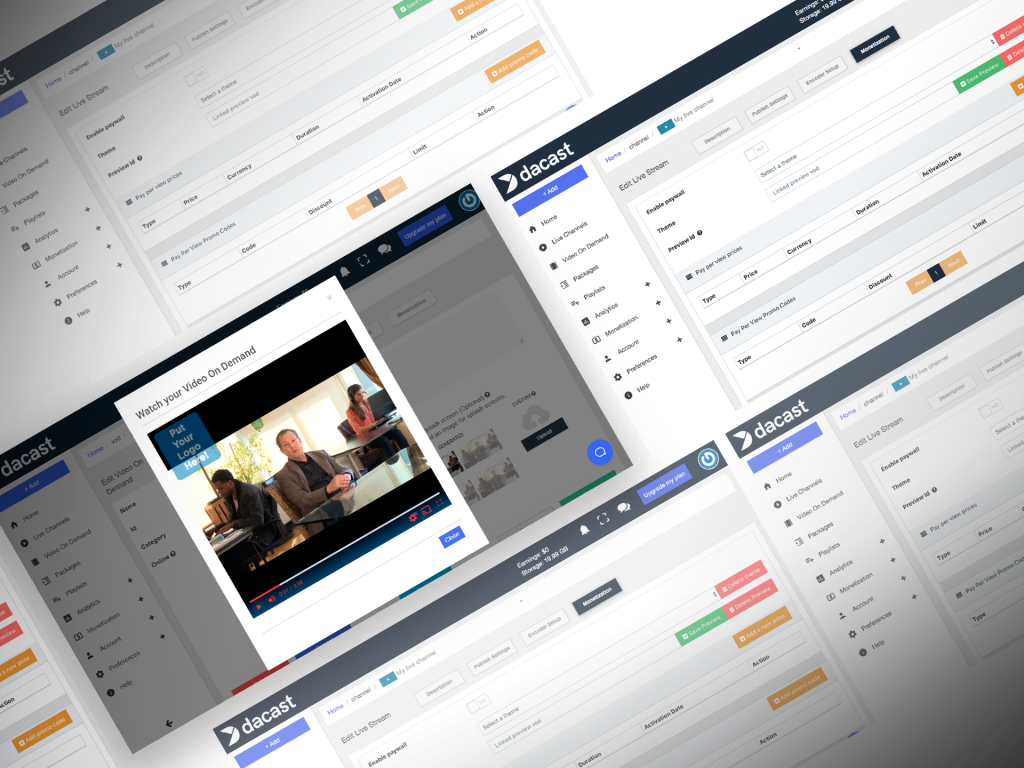Video.js & HTML5 Video Players: Everything You Need to Know
Video viewership has been exploding over the past few years. Moreover, the multitude of devices being used to stream is also growing rapidly. That means it’s more complicated than ever to offer a seamless user experience.
Since a video player is the most tangible part of the video streaming process, it only makes sense to choose one that’s built upon the latest technologies such as Video.js. In today’s digital landscape, that means an innovative HTML5 video player.
In this article, we’ll dive into HTML5 video support, the Video.js player, and the rise of HLS streaming. You’ll also learn why companies are making the shift away from RTMP and Flash in favor of HTML5 video streaming. Finally, we’ll cover how Dacast’s video player and API fit into the mix.
Let’s get started.
Table of Contents
- Benefits of Using an HTML5 Video Player
- What is Video.js?
- What is HLS Streaming?
- Dacast’s HTML5 Video Player
- How do I make a custom video player for my website?
- Conclusion
Benefits of Using an HTML5 Video Player

HTML5 video players have revolutionized how video is streamed and viewed online. With the <video> tag built directly into HTML5, videos can be seamlessly embedded without relying on third-party plugins like Adobe Flash. This ensures smoother performance and faster load times across all devices.
One of the key benefits of an HTML5 video player is its customizability, allowing brands to create on-brand, engaging experiences tailored to their audiences. Companies can harness Video.js plugins and the Video.js API to easily implement features like closed captions, adaptive bitrate streaming (including HLS video player support), and even monetization tools.
Perhaps most importantly, HTML5 streaming has become the universal standard, compatible with laptops, tablets, smartphones, and smart TVs alike. This level of accessibility and control makes the HTML5 player an essential part of any modern video strategy today.
What is Video.js?

Video.js is an open-source HTML5 video player built with JavaScript and CSS to ensure a consistent viewing experience across all browsers. As a highly customizable video player, it comes with a default base theme that can easily be tailored with custom skins, icons, and styling to reflect your brand.
Beyond its flexible styling, Video.js features a powerful API and an extensive plugin system. This makes it simple to add advanced functionality such as playlists, analytics, and even monetization features. These features are key for modern enterprise video streaming and the best video player for live streaming. Developers can also create custom plugins to address unique business needs.
Below, you can see how Video.js compares to other HTML5 players:
| Feature / Player | Video.js | Plyr | Shaka Player | Clappr | JW Player |
|---|---|---|---|---|---|
| Open Source | Yes (fully open-source) | Yes (MIT license) | Yes (Apache 2.0) | Yes (BSD-3-Clause) | No (commercial license, limited free) |
| Customization & Skins | Highly customizable (CSS, API, plugins) | Customizable themes & icons | Minimal styling, focused on playback | Themes & custom overlays | Skin customization |
| Plugin Ecosystem | Extensive plugin ecosystem | Limited plugin options | Limited plugins (focused on DASH/HLS) | Moderate plugin ecosystem | Plugins (ads, analytics, etc.) |
| Adaptive Streaming | HLS & DASH via plugins (VHS, contrib-dash) | HLS native, DASH with plugins | DASH & HLS native | HLS native, DASH via plugin | HLS & DASH native |
| Enterprise Features | Enterprise video streaming & monetization support | Limited monetization support | No built-in monetization | Ad support via plugins | Strong enterprise & ad monetization |
| Accessibility | Full WCAG support, screen readers, ARIA roles | Good WCAG support | Caption & audio track support | Basic accessibility support | Excellent accessibility features |
| DRM Support | DRM via third-party plugins | DRM not native | Native support for Widevine, PlayReady | RM requires custom implementation | Native DRM (Widevine, PlayReady) |
| Performance Optimization | Lazy loading, preloading, edge delivery | Light-weight, fast load times | Low-latency streaming & DASH performance | Fast load times, edge delivery support | Strong performance & edge support |
| AI & Smart Features | Integrates AI-based captions, recommendations | Basic functionality | No built-in AI support | Limited AI integrations | Advanced AI recommendations, analytics |
| Ease of Use | Easy to integrate, well-documented | Very easy, modern UI | Developer-focused, more technical setup | Easy to integrate | Straightforward, good documentation |
| Best Use Case | Best for enterprise video streaming, custom player features, and plugin-based workflows | Best for lightweight, minimal custom needs | Best for DASH/HLS-focused projects needing strong standards support | Best for live streaming and flexible overlays | Best for enterprise video streaming and monetization-focused use cases |
How To Use Video.js?
Setting up Video.js is straightforward. Since it’s an open-source video player that relies on just JavaScript and CSS files, you only need to include these from a content delivery network (CDN) in the <head> of your webpage. Any <video> element with the video-js class will be automatically enhanced by the Video.js HTML5 player. Using the data-setup attribute, you can further customize playback settings and integrate features specific to your use case.
Benefits of Streaming with Video.js
HTML5 streaming through Video.js has become a standard for delivering high-quality, consistent playback across devices. The player addresses cross-browser inconsistencies and even offers fallback support for older technologies like Flash—though this is rarely needed today.
Key features like full-screen mode, subtitle support, and seamless cross-browser compatibility are included by default, saving developers significant time. With its robust JavaScript video library and the flexibility of the Video.js API, businesses can ensure smooth playback on laptops, smartphones, tablets, smart TVs, and more.
At the same time, Video.js is committed to accessibility standards, supporting screen readers, ARIA roles, and keyboard navigation. With built-in subtitle support, captions can be easily added to make videos more inclusive. These features ensure compliance with WCAG guidelines and also expand your audience reach.
Performance Optimization Techniques
To deliver a superior experience today, Video.js supports several performance optimization strategies:
- Lazy Loading and Preloading: Videos can be loaded only when visible or when playback is likely, minimizing unnecessary data usage and improving page load times.
- Hardware Acceleration: Using GPU-based rendering ensures smoother playback on supported devices.
- Low-Latency Streaming: For live streaming video player scenarios, Video.js works seamlessly with HLS video player setups and other low-latency solutions to reduce buffering and maintain high-quality playback.
PWA and Mobile App Integration
Video.js shines in Progressive Web Apps (PWAs) and hybrid mobile environments. As a lightweight JavaScript video library, it ensures fast load times and smooth playback on mobile devices, making it the best video player for live streaming within modern app frameworks. This player also integrates seamlessly with HTML5 video player APIs in hybrid apps, ensuring adaptive performance and offline playback where supported.
If you are using enterprise video streaming, Video.js can be tailored for responsive layouts and device-specific optimizations. This is used for consistent experiences across native, web, and hybrid apps.
Plugin Ecosystem Highlights
The Video.js ecosystem offers powerful plugins for customization and monetization:
- videojs-http-streaming (VHS): Native support for HLS video player streaming with low-latency delivery. It’s essential for HTML5 streaming and live streaming video player deployments.
- videojs-contrib-ads: Advanced ad insertion, including mid-roll and pre-roll advertising, making it ideal for enterprise video streaming and Video.js monetization strategies.
- videojs-markers: Add chapter markers, event highlights, or custom call-to-actions—perfect for educational, marketing, and enterprise-grade content.
These updated plugins demonstrate how Video.js remains the best customizable video player for modern streaming experiences.
Security Enhancements
Video.js supports advanced security features that protect content and maintain viewer trust. Some of its current best practices include the following:
- Tokenized URLs enable secure video delivery with time-limited access tokens to prevent unauthorized sharing.
- Watermarking provides dynamic overlays to deter screen recording and piracy, particularly important in sensitive enterprise video streaming environments.
- Video.js also supports encrypted HLS, using AES-128 and SAMPLE-AES encryption to ensure secure content delivery across all networks.
- Integration with DRM solutions like Widevine and PlayReady enables end-to-end protection in commercial deployments.
Multi-CDN and Edge Delivery Support
For global scalability and low-latency playback, Video.js seamlessly integrates with multi-CDN strategies and edge delivery architectures. As a lightweight HTML5 video player, it works with modern load-balancing solutions to route video streams through the fastest available CDN nodes. This reduces buffering, improves availability, and optimizes HTML5 streaming performance for users worldwide.
The Evolution of Video.js with AI
Video.js is yet another tool embracing AI-driven enhancements to deliver more intelligent playback and engagement:
- Automatic Captioning: Integrations with AI-powered transcription services to provide real-time subtitles, boosting accessibility.
- Smart Recommendations: Use of AI to deliver personalized video suggestions based on viewer behavior, increasing engagement and watch times.
- Adaptive Player Controls: Dynamic adjustments to playback speeds and layouts based on user preferences and network conditions.
What is HLS Streaming?

HLS (HTTP Live Streaming) is a media streaming protocol that delivers video and audio content to viewers over the internet. Developed by Apple, HLS was initially designed to solve issues that iPhones experienced when switching between WiFi and mobile networks during playback. Today, it has become a cornerstone for modern video delivery, especially with HTML5 video players like Video.js.
The HLS streaming protocol works by breaking video content into small segments and storing them on standard HTTP servers. These video chunks are then served to users over HTTP, eliminating the need for specialized infrastructure and enabling seamless integration with multi-CDN strategies and edge delivery networks. This flexibility is crucial for enterprise video streaming, where reliable playback across the globe is a top priority.
At the heart of HLS is the M3U8 playlist file, which acts as an index of available video chunks and their quality variants. This enables HLS video players to perform adaptive bitrate streaming, automatically adjusting video quality in real-time to match user bandwidth and device conditions. As HTML5 streaming continues to dominate in 2025, HLS has become the preferred delivery method for most companies using HTML5 and Video.js, thanks to its ability to scale effortlessly and ensure smooth playback.
For developers and businesses, integrating HLS with a customizable video player, like the Video.js HTML5 one, is an ideal solution. With Video.js plugins and a strong JavaScript video player API, streaming workflows can be tailored to meet specific branding, monetization, and performance requirements. This adaptability ensures that the best video player for live streaming is also one of the most future-proof choices available in the fast-evolving video landscape.
HLS vs. RTMP
The playback needs play a big role when choosing the right streaming protocol. RTMP doesn’t work natively in HTML5 video players, while HLS doesn’t support Flash by default. With HTML5 streaming and the best video players like Video.js taking center stage, HLS has emerged as the preferred protocol.
As Flash fades and Google Chrome fully supports HTML5 video, HLS stands out for its caching capabilities, smoother playback, and reliable delivery. RTMP, although outdated for direct playback, still has a role in sending live streams from encoders to platforms. For modern enterprise video streaming, HLS with a customizable video player like the Video.js HTML5 player is the clear winner.
Dacast’s HTML5 Video Player

Dacast’s HTML5 Video Player, built on the strong Video.js framework, offers a comprehensive solution for businesses seeking a customizable and secure video streaming platform. This white-label player ensures seamless playback across devices and browsers, making it ideal for various professional applications. Below, you can see how the Dacast HTML5 video player brings a number of benefits over the Video.js player.
1. User Experience
Beyond the standard capabilities of Video.js, Dacast’s player introduces advanced features. For example, companies can enhance the user experience by using chapter marketers to make hosting and navigating longer videos easier. The player also facilitates the addition of closed captions and subtitles, enhancing accessibility and compliance with global standards.
Access restrictions based on geography or referrer enable brands to maintain complete control over their content. This also allows broadcasters to deliver videos to China without violating regulations.
2. Monetization

An integrated paywall is a great way to bring in revenue, but users need to trust that they’re safe to use. Dacast integrates a secure, HTTPS and SSL-encrypted paywall directly into its HTML5 video player, supporting both subscription-based and transactional monetization models.
Additionally, customizable calls-to-action (CTAs) can be embedded to guide viewers toward desired actions, such as visiting a website or subscribing to a newsletter.
3. Customization
Unlike many of the video plugins from the past, the HTML5 player is a white label solution and is completely wiped of Dacast branding. The platform offers extensive customization options, allowing businesses to align the video player’s appearance with their brand identity. This includes modifying colors, logos, and other visual elements, ensuring a consistent brand experience across all video content.
4. Audio Streaming
Recognizing the growing importance of audio content, Dacast supports live and on-demand audio streaming via HLS. This feature enables organizations to distribute podcasts, radio broadcasts, and other audio content effectively through the same HTML5 player used for video.
Dacast’s Video API

Many brands will want to customize the Dacast video player even further. Dacast provides a comprehensive Video API, facilitating seamless integration of video content into existing applications and workflows.
The video content management API is designed for easily integrating cloud-based apps and services with the Dacast platform. That way, brands can make the most of their online video platform and deliver high-quality and relevant video content to their end-users by leveraging additional business systems. For instance, the JavaScript player API allows for real-time control over playback features, enabling dynamic interactions and personalized user experiences.
How do I make a custom video player for my website?
While Dacast’s feature-rich HTML5 video player is a solid choice, you can also build a custom video player using the player API or mobile SDK. In addition to Video.js, Dacast’s player API is compatible with other players like Flowplayer. This flexibility lets you choose an open-source video player or develop your own player from scratch, while still leveraging the robust features provided by Dacast’s platform.
Conclusion
Ultimately, choosing the right video streaming technology is about delivering a seamless experience for your viewers. You wouldn’t want them to worry about video players, protocols, or technical details. An HTML5 video player built with Video.js, like the one offered by Dacast, ensures reliable performance and easy customization.
Dacast’s award-winning platform provides not just a powerful video player but also live streaming, video on demand, and recording capabilities. If you’re looking for a comprehensive online video solution with complete control over your user experience, consider starting with our risk-free 14-day trial (no credit card required).
Find out if Dacast’s HTML5 video player and underlying video streaming technologies are a good fit for your organization. Our video hosting and live streaming platform is both feature-rich and affordable.
We encourage you to take advantage of our risk-free 14-day trial and test out all of our features (no credit card required).
For exclusive offers and live streaming tips, join our LinkedIn group. Have questions or feedback? Drop a comment below and we’ll be happy to help.
 Stream
Stream Connect
Connect Manage
Manage Measure
Measure Events
Events Business
Business Organizations
Organizations Entertainment and Media
Entertainment and Media API
API Tools
Tools Learning Center
Learning Center Support
Support Support Articles
Support Articles